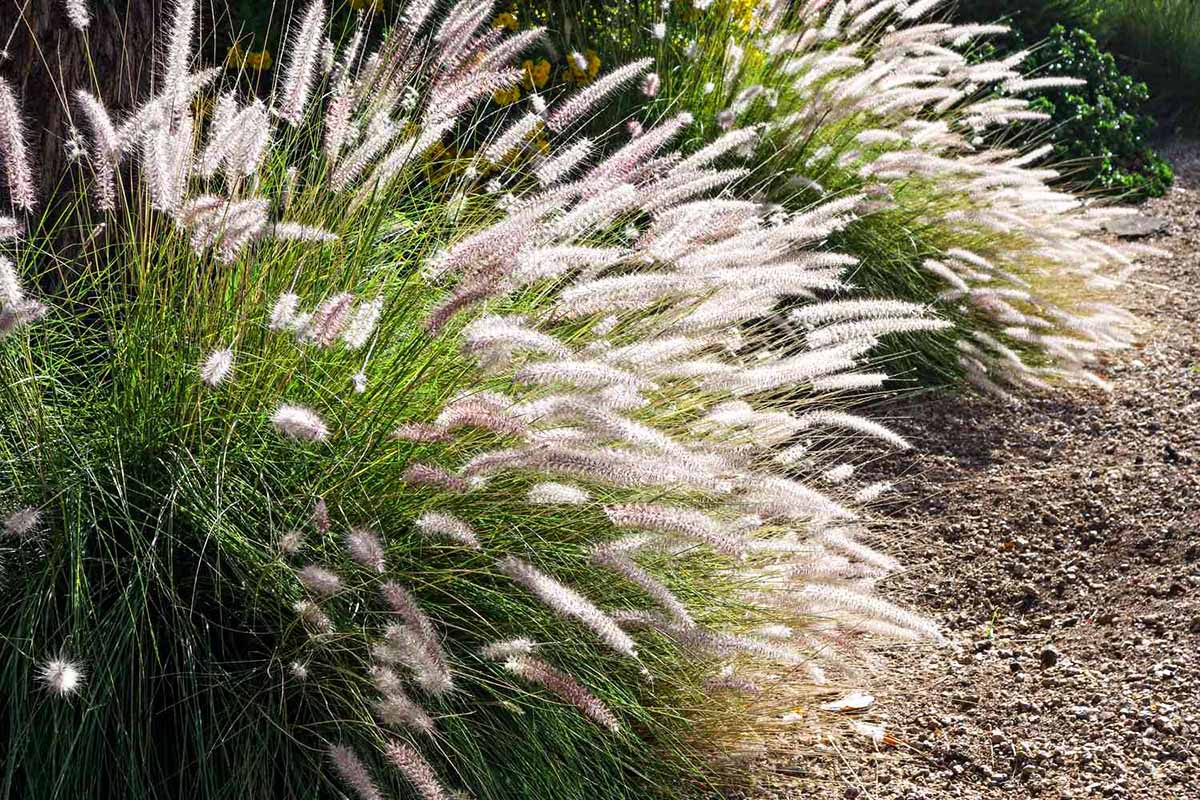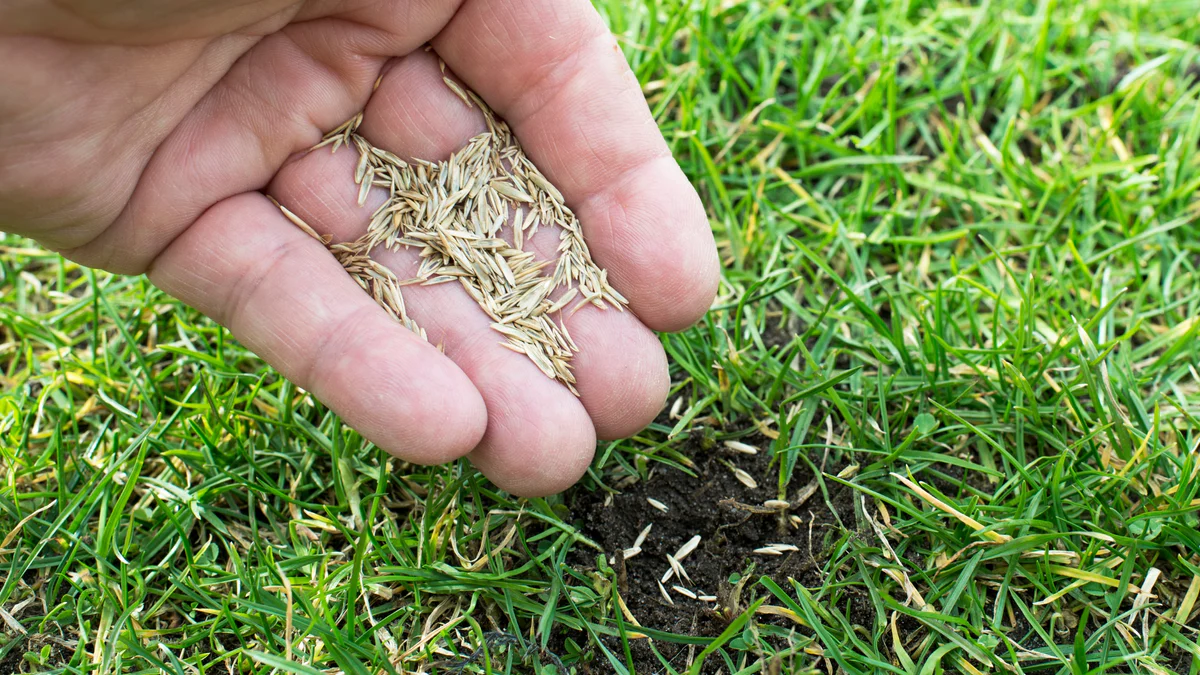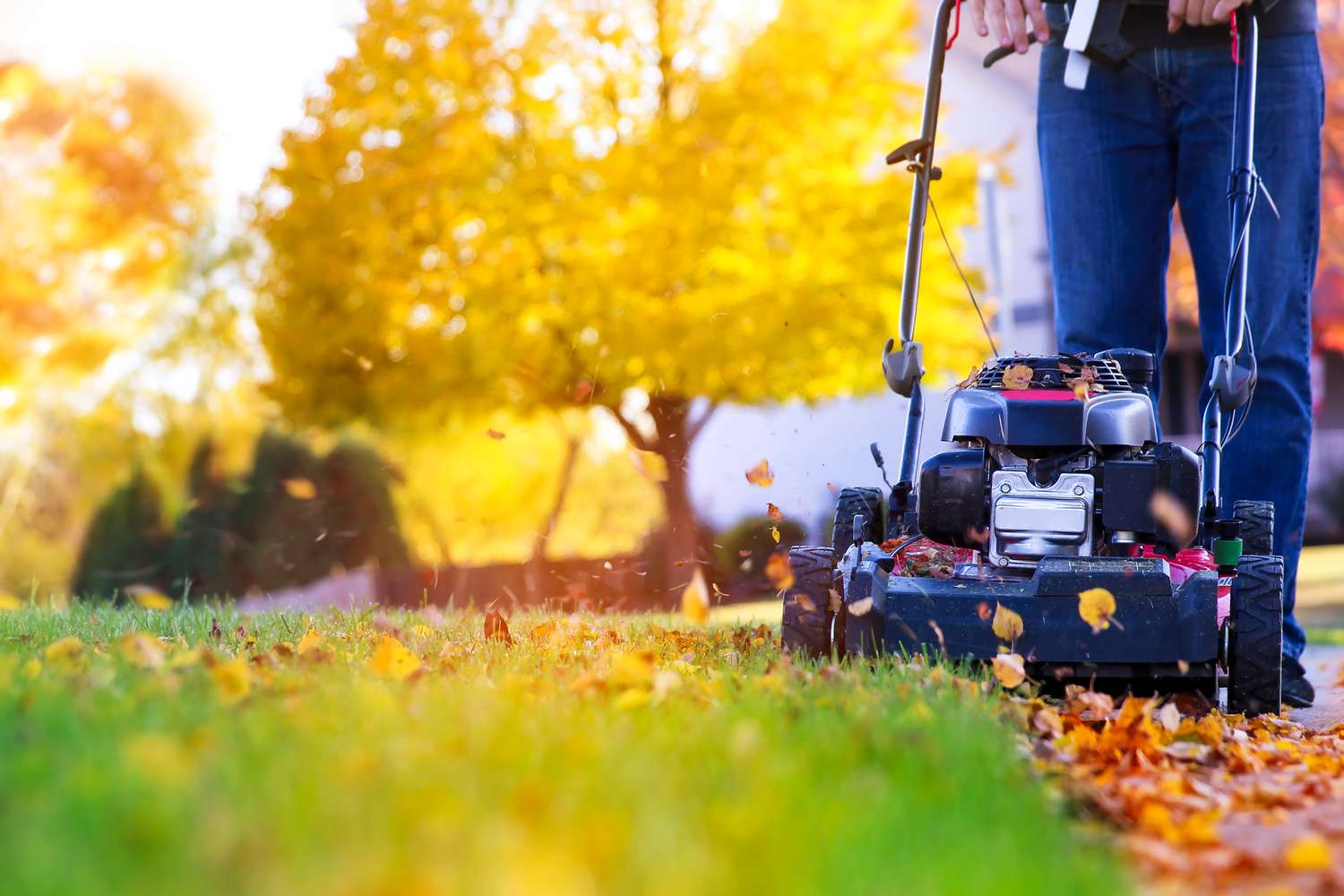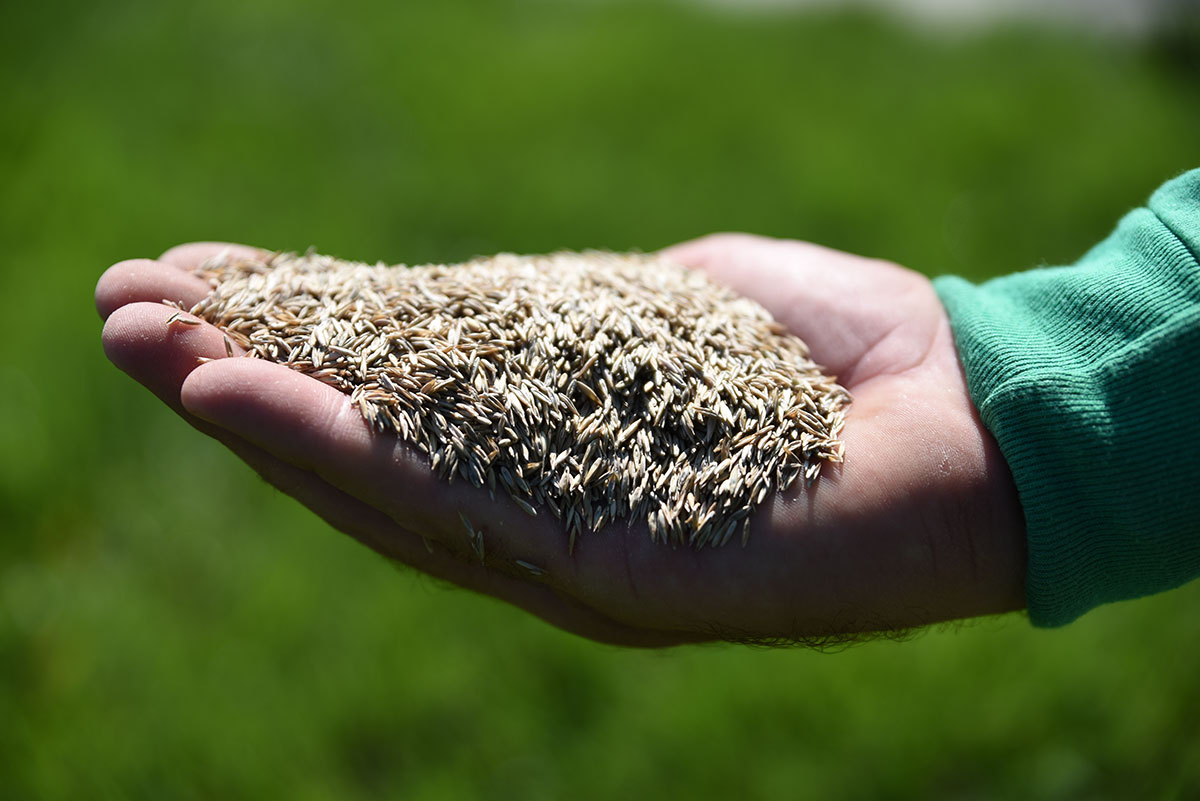Home>Garden Essentials>How Long For Grass To Germinate In Fall


Garden Essentials
How Long For Grass To Germinate In Fall
Modified: March 15, 2024
Learn how long it takes for grass to germinate in your garden during the fall season. Prepare your lawn for the colder months with these helpful tips.
(Many of the links in this article redirect to a specific reviewed product. Your purchase of these products through affiliate links helps to generate commission for Storables.com, at no extra cost. Learn more)
Introduction
When it comes to creating a lush and vibrant garden, one of the first steps is to sow grass seeds. Whether you’re starting a new lawn or looking to rejuvenate your existing one, proper grass germination is crucial. Fall is an ideal time to sow grass seeds because the cooler temperatures and increased moisture create favorable conditions for germination.
In this article, we will explore the factors that affect grass germination, the ideal conditions for germination in the fall, common grass types and their germination times, how to prepare the soil for grass seeds, and the steps to sow and care for germinating grass. We will also address any troubleshooting issues that may arise along the way. So, if you are ready to transform your garden into a lush green oasis, let’s dive in!
Key Takeaways:
- Fall provides the perfect conditions for grass seeds to germinate, with cooler temperatures and increased moisture creating an ideal environment for lush and vibrant lawns.
- Proper soil preparation, choosing the right grass seed, and providing aftercare and maintenance are crucial for successful grass germination in the fall.
Read more: How Long To Water Grass In Fall
Factors Affecting Grass Germination
Several factors influence the germination of grass seeds, determining the success and speed of the process. Understanding these factors can help you optimize your grass germination efforts:
1. Temperature
Temperature plays a crucial role in seed germination. Most grass species thrive in temperatures ranging from 60 to 75 degrees Fahrenheit (15 to 24 degrees Celsius). Cooler temperatures of fall provide an ideal environment for grass seeds to germinate without the stress of extreme heat.
2. Moisture
Adequate moisture is essential for seed germination. During the fall season, the ambient humidity levels are often higher, providing optimal conditions for grass seeds to absorb water and begin the germination process.
3. Soil Conditions
The quality and condition of the soil can greatly impact grass germination. The soil should be well-draining, loamy, and rich in organic matter. It is essential to remove any debris, rocks, or weeds from the soil surface to ensure even seed-to-soil contact.
Read more: How Long For Grass Seed To Germinate
4. Light Exposure
Most grass seeds require some exposure to sunlight for germination. However, the seeds should not be exposed to direct sunlight for extended periods, as it can dry out the soil and inhibit germination. Lightly covering the seeds with a thin layer of soil or straw can help retain moisture and provide the necessary shade.
5. Seed Quality
The quality of the grass seeds you use is crucial for successful germination. Choose certified seeds that are fresh, free from pests or diseases, and suited to your climate zone. Investing in high-quality seeds significantly increases the chances of successful germination.
By paying attention to these factors and making the necessary adjustments, you can create the ideal conditions for grass seeds to germinate and thrive. Now, let’s explore what those ideal conditions are in the fall season.
Ideal Conditions for Grass Germination in the Fall
When sowing grass seeds in the fall, you want to create the most favorable conditions for germination. Here are the ideal conditions to consider:
1. Temperature Range
Fall weather provides cooler temperatures, which are ideal for grass seed germination. Aim for daytime temperatures ranging from 60 to 75 degrees Fahrenheit (15 to 24 degrees Celsius) for most grass species. The cooler temperatures help prevent seedling stress and allow for gradual growth.
2. Moisture
Fall typically brings increased rainfall and dew, creating the necessary moisture for grass seed germination. However, it’s important to ensure that the soil doesn’t become waterlogged, as excessive moisture can lead to fungal diseases and poor germination. Aim for moist, but not saturated, soil conditions.
3. Soil Preparation
Preparing the soil before sowing grass seeds greatly improves germination success. Start by removing any debris, rocks, or weeds from the soil surface. Then, loosen the soil using a rake or tiller to a depth of 4-6 inches. This allows the roots to penetrate easily and promotes healthy seedling growth.
4. Soil pH
Check the pH level of your soil to ensure it falls within the optimal range for grass growth, typically between 6.0 and 7.0. If the pH is too acidic or alkaline, consider making the necessary adjustments by adding lime to raise the pH or sulfur to lower it.
5. Fertilizer Application
Applying a slow-release, balanced fertilizer before sowing grass seeds can provide the necessary nutrients for healthy germination and seedling growth. Follow the recommended application rates on the fertilizer packaging, and ensure even distribution across the soil surface.
Read more: How Long Does Bahia Grass Take To Germinate
6. Seed-to-Soil Contact
Good seed-to-soil contact is essential for successful germination. After spreading the grass seeds, lightly rake the area or use a roller to press them into the soil. This ensures the seeds have proper contact with the soil and helps prevent them from washing away or drying out.
By creating these ideal conditions, you maximize the chances of successful grass germination in the fall. Now, let’s explore the germination times of common grass types to help you plan accordingly.
Common Grass Types and Their Germination Times
Different grass species have varying germination times, which is an important factor to consider when planning your fall grass seeding. Here are some common grass types and their average germination times:
1. Kentucky Bluegrass
Kentucky Bluegrass is a popular cool-season grass known for its dense and lush appearance. It has an average germination time of 14 to 30 days. While it may take longer to germinate than some other grass types, its durability and ability to withstand heavy foot traffic make it worth the wait.
2. Perennial Ryegrass
Perennial Ryegrass is a fast-growing grass that establishes quickly and provides an attractive, deep green lawn. It has a relatively short germination time of 5 to 10 days, making it a popular choice for homeowners looking for quick results.
3. Tall Fescue
Tall Fescue is a versatile grass species that adapts well to various soil types and climate conditions. It has an average germination time of 7 to 14 days. Tall Fescue is known for its deep root system, making it more drought-tolerant compared to other grass types.
4. Bermuda Grass
Bermuda Grass is a warm-season grass commonly found in southern regions. It has a relatively short germination time of 7 to 14 days when sown in warm soil. However, it requires higher soil temperatures and may not be suitable for cooler fall climates.
5. Zoysia Grass
Zoysia Grass is a warm-season grass that thrives in hot and humid climates. It has an average germination time of 14 to 21 days. Zoysia Grass forms a dense, carpet-like turf with good drought and wear tolerance.
It’s important to note that these germination times are approximate and can vary depending on factors such as soil temperature, moisture levels, and seed quality. Always refer to the specific instructions provided by the seed manufacturer for accurate germination information.
Now that you are familiar with some common grass types and their germination times, let’s move on to the steps for preparing the soil before sowing grass seeds in the fall.
How to Prepare the Soil for Grass Seeds
Proper soil preparation plays a crucial role in the success of grass seed germination. Follow these steps to ensure your soil is ready to provide the ideal environment for seed growth:
1. Clear the Area
Start by clearing the area of any debris, rocks, or weeds. Remove any obstacles that may hinder seed-to-soil contact and impede germination.
2. Test the Soil
Testing the soil pH and nutrient levels is essential to determine if any amendments are required. A simple soil test kit or sending a sample to a local extension office can provide valuable information. Adjust the soil pH and nutrient levels as needed.
3. Loosen the Soil
Using a garden rake or a tiller, loosen the top layer of soil to a depth of 4 to 6 inches. This allows the grass roots to penetrate easily and promotes better water and nutrient absorption.
4. Remove Excess Vegetation
If there is existing grass or vegetation in the area, it is recommended to remove it to prevent competition with the newly sown seeds. Use a sod cutter or a sharp shovel to cut and remove the vegetation.
5. Improve Soil Structure
If your soil is heavy or compacted, consider adding organic matter such as compost or well-rotted manure. Organic matter enhances soil structure, drainage, and fertility, providing a better environment for seed germination.
6. Level the Soil
Use a garden rake to level the soil surface. This helps to ensure an even distribution of the grass seeds and an overall uniform growth of the new lawn.
7. Final Soil Preparation
Before sowing the grass seeds, lightly water the prepared soil to ensure it is sufficiently moist. Avoid over-watering, as excessively wet soil can hinder seed germination. The soil should be damp but not waterlogged.
By following these steps, you will create an optimal soil environment for grass seed germination. Now, let’s move on to the process of sowing the grass seeds in the fall.
Sowing Grass Seeds in the Fall
Sowing grass seeds in the fall is an excellent way to establish a healthy and lush lawn. Follow these steps to ensure successful seed distribution and germination:
Read more: How Short To Cut Grass In The Fall
1. Choose the Right Grass Seed
Select a grass seed type that is suitable for your climate and lawn needs. Consider factors such as sun exposure, soil conditions, and the purpose of the lawn (e.g., shade tolerance, durability, or aesthetic appeal).
2. Calculate Seed Amount
Determine the amount of grass seed you will need based on the area you plan to seed. Refer to the instructions on the seed packaging, which typically provide recommended seeding rates for different grass species.
3. Divide the Area
If you are working with a large area, divide it into smaller sections. This allows for better control and ensures even seed distribution throughout the lawn.
4. Spread the Seeds
For even distribution, use a seed spreader or broadcast the seeds by hand. Start by making one pass along the length of the area and then the width. This helps to ensure that the seeds are spread evenly and avoid sparse or overcrowded areas.
Read more: How Often Water Grass In Fall
5. Cover the Seeds
Lightly rake the area or use a roller to press the seeds into the soil. This promotes seed-to-soil contact and protects the seeds from being eaten by birds or washed away by rain. Alternatively, you can cover the seeds with a thin layer of straw or mulch to retain moisture and provide some insulation.
6. Water the Seeded Area
Water the newly seeded area gently and evenly to ensure the soil remains moist but not saturated. Aim for regular and light watering to prevent the soil from drying out or becoming waterlogged, which can hinder seed germination.
7. Follow Proper Watering Schedule
During the germination process, water the seeded area frequently to keep the soil consistently moist. Once the grass has established, gradually reduce the frequency of watering but increase the amount of water to encourage deep root growth.
By following these steps, you will increase the chances of successful grass seed germination in the fall. Now, let’s move on to the aftercare and maintenance of germinating grass.
Aftercare and Maintenance of Germinating Grass
After sowing grass seeds in the fall, it’s important to provide proper aftercare and maintenance to ensure the healthy growth and establishment of your new lawn. Follow these steps to care for germinating grass:
Read more: When To Plant Grass In Fall
1. Watering
Continue to water the seeded area regularly to keep the soil consistently moist. Watering deeply and infrequently promotes healthy root development. Avoid overwatering, as it can lead to shallow root growth and fungal diseases.
2. Mowing
Avoid mowing the newly germinated grass until it reaches a height of 3 to 4 inches. When you do start mowing, set the lawnmower blades to a higher setting to prevent stressing the young seedlings. Gradually lower the cutting height as the grass becomes more established.
3. Fertilizing
After the grass has germinated and established, apply a slow-release fertilizer according to the manufacturer’s instructions. This helps provide the necessary nutrients for healthy growth. Avoid over-fertilization, as it can lead to excessive top growth and weak roots.
4. Weed Control
Keep an eye out for weeds and address them promptly. Hand-pull or use a selective herbicide to control weed growth. Avoid using herbicides during the germination process, as it can harm the newly germinated grass.
Read more: What Can Germinate From Fall To Spring
5. Avoid Heavy Foot Traffic
Limit foot traffic on the germinating grass to prevent damage. Young seedlings have delicate and weak root systems, so it’s best to avoid heavy use until the grass is well-established.
6. Overseeding Bare Areas
If you have any bare or thin areas in your lawn, consider overseeding these spots to encourage uniform growth. Prepare the soil, spread grass seeds, and follow the same watering and maintenance practices as for the initial seeding.
7. Patience
Lastly, be patient. Grass seed germination and establishment take time. It may take a few weeks or even months for your lawn to become fully established and thickened. Be consistent with your maintenance practices and provide the necessary care, and soon you will enjoy a beautiful and healthy lawn.
By following these aftercare and maintenance steps, you will promote the growth and establishment of your newly germinated grass. Now, let’s address some common troubleshooting issues that may arise along the way.
Troubleshooting: Reasons for Delayed Grass Germination
While sowing grass seeds in the fall generally leads to successful germination, there are certain factors that can cause delays or hinder the process. Here are some common reasons for delayed grass germination and how to address them:
Read more: What Grass To Plant In The Fall
1. Insufficient Moisture
If the soil is not kept consistently moist, it can delay or hinder grass seed germination. Ensure that you are providing enough water to keep the soil damp, but be cautious not to overwater. Adjust your watering schedule as needed to maintain the optimal moisture level for germination.
2. Cool Soil Temperature
Fall temperatures can fluctuate, and if the soil temperature drops below the recommended range for germination, it can slow down the process. Consider using seed blankets or covers to maintain a more stable soil temperature and help accelerate germination.
3. Poor Seed-to-Soil Contact
If the grass seeds are not in direct contact with the soil, they may struggle to germinate. Ensure proper seed-to-soil contact by lightly raking or rolling the area after seed application. This helps the seeds establish direct contact with the soil, improving germination rates.
4. Low-Quality Seeds
Using low-quality or old grass seeds can result in poor germination rates and delayed growth. Always choose high-quality, fresh seeds from reputable suppliers. Check the seed packaging for expiration dates and quality assurance labels to ensure you are using the best possible seeds for your lawn.
Read more: How Late To Plant Grass Seed In Fall
5. Weed Competition
Weeds can compete with grass seeds for water, sunlight, and nutrients, slowing down the germination process. Take steps to control weed growth, such as hand-pulling or using selective herbicides. Avoid using herbicides during the germination stage as it can harm the newly germinated grass.
6. Extreme Weather Conditions
Unfavorable weather conditions, such as heavy rains, drought, or extreme temperatures, can delay or inhibit seed germination. While you cannot control the weather, you can take steps to mitigate its impact. Use straw or mulch to protect the seeds from heavy rains or excessive heat, and ensure proper irrigation during dry periods.
7. Soil Compaction
Compacted soil can hinder seedling growth and root development. Loosen compacted soil before seeding by aerating or tilling the area. This helps improve soil structure, drainage, and overall seedling establishment.
By addressing these issues, you can troubleshoot and overcome delays in grass seed germination. Remember to be patient, as germination can take time. With proper care and attention, you will soon be rewarded with a lush and thriving lawn.
Now, let’s conclude our journey to achieving successful grass germination in the fall.
Conclusion
Sowing grass seeds in the fall is a fantastic way to establish a beautiful and vibrant lawn. By understanding the factors that affect grass germination and creating the ideal conditions, you can ensure the success of your grass seeding efforts. Temperature, moisture, soil quality, light exposure, and seed quality all play crucial roles in the germination process.
Preparing the soil properly before sowing the grass seeds is essential for creating an environment conducive to germination. Clearing the area, testing the soil, loosening it, improving soil structure, and ensuring seed-to-soil contact are vital steps to take.
Choosing the right grass seed and understanding its germination time will help you plan accordingly. Kentucky Bluegrass, Perennial Ryegrass, Tall Fescue, Bermuda Grass, and Zoysia Grass are some common grass types with varying germination times.
After sowing the grass seeds, providing proper aftercare and maintenance is crucial. Regular watering, mowing, fertilizing, weed control, and minimizing foot traffic are essential practices to ensure the healthy growth and establishment of your new lawn.
It’s important to troubleshoot any issues that may arise, such as insufficient moisture, cool soil temperature, poor seed-to-soil contact, low-quality seeds, weed competition, extreme weather conditions, and soil compaction. By recognizing and addressing these issues, you can overcome delays in germination and promote a robust lawn.
Remember, growing a lush and vibrant lawn takes time and patience. With the right knowledge, preparation, and care, you can create a beautiful landscape that will be admired for years to come.
So, embrace the fall season, follow these guidelines, and enjoy the process of sowing and nurturing your grass seeds. Soon enough, your efforts will be rewarded with a thriving and picturesque lawn that will be the envy of the neighborhood.
Frequently Asked Questions about How Long For Grass To Germinate In Fall
Was this page helpful?
At Storables.com, we guarantee accurate and reliable information. Our content, validated by Expert Board Contributors, is crafted following stringent Editorial Policies. We're committed to providing you with well-researched, expert-backed insights for all your informational needs.




0 thoughts on “How Long For Grass To Germinate In Fall”